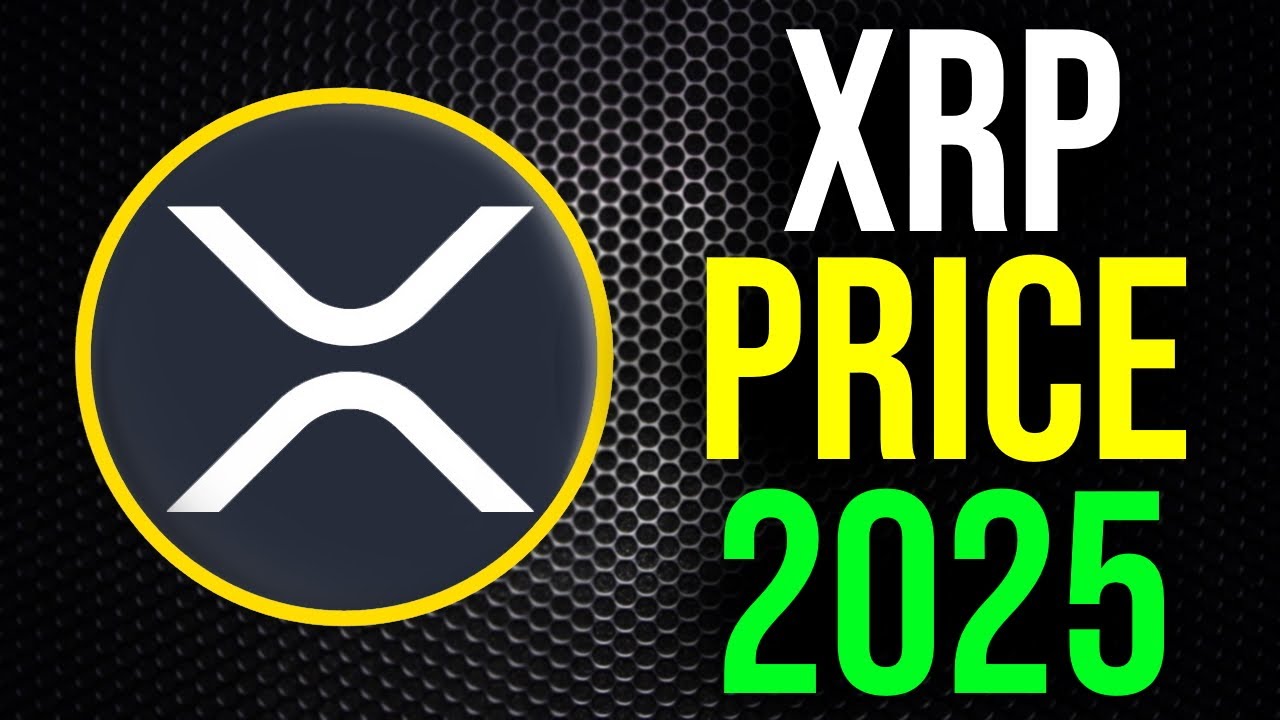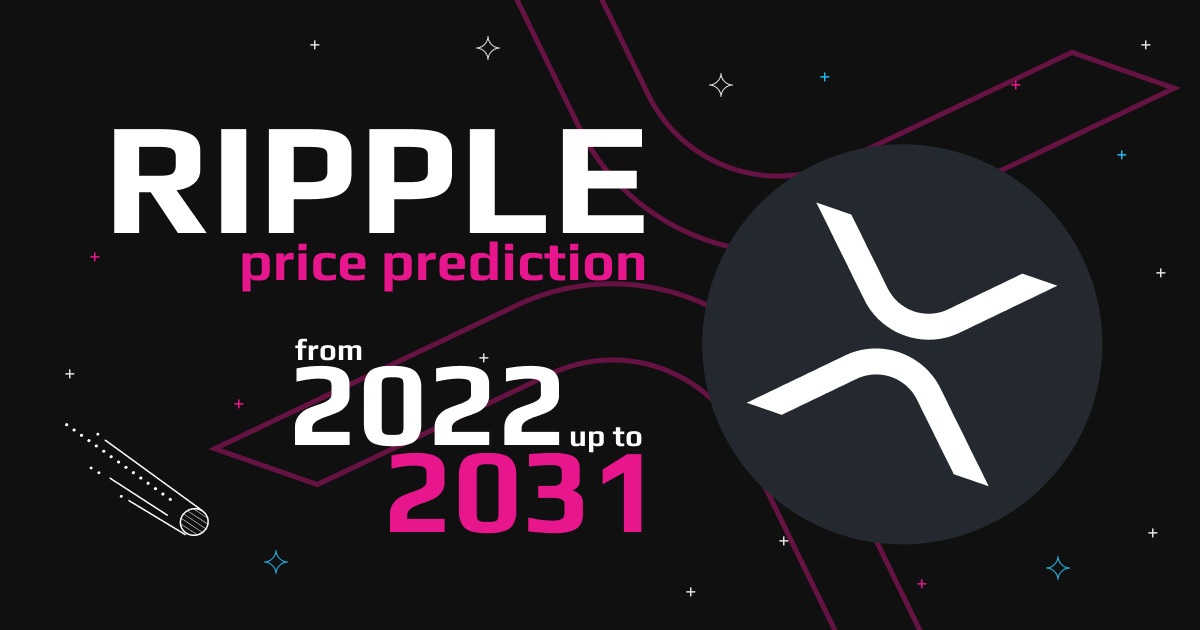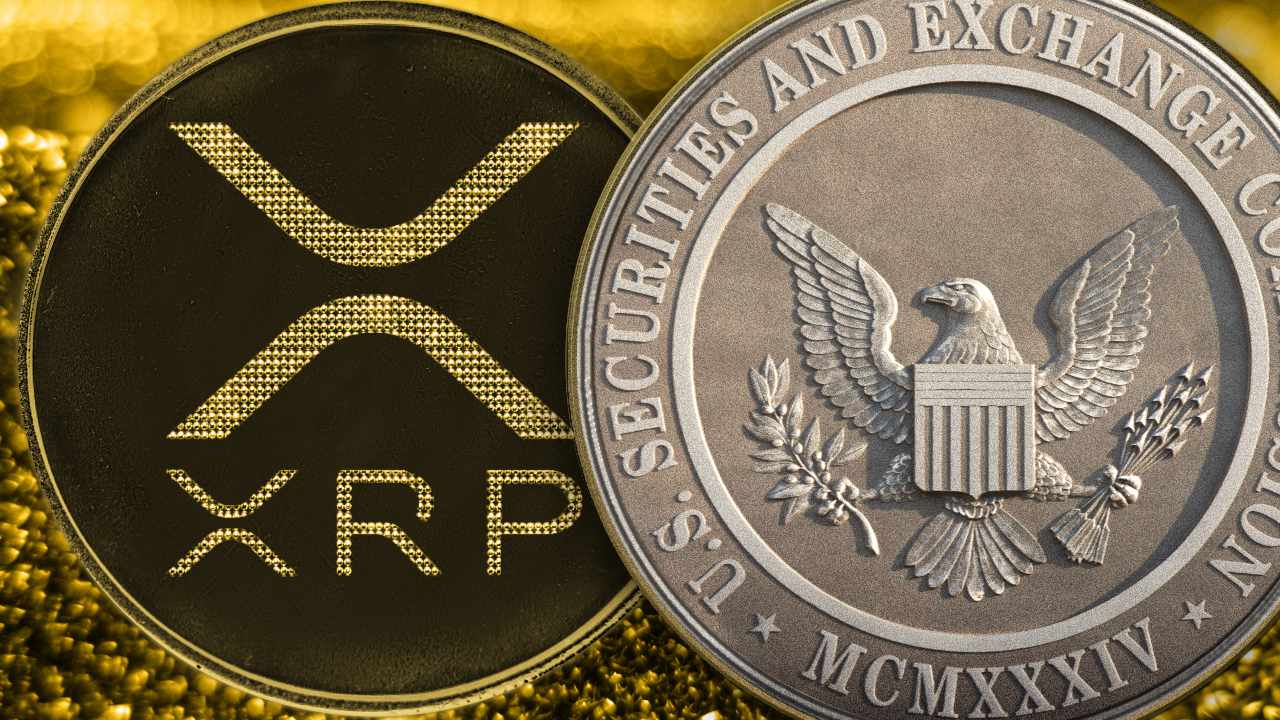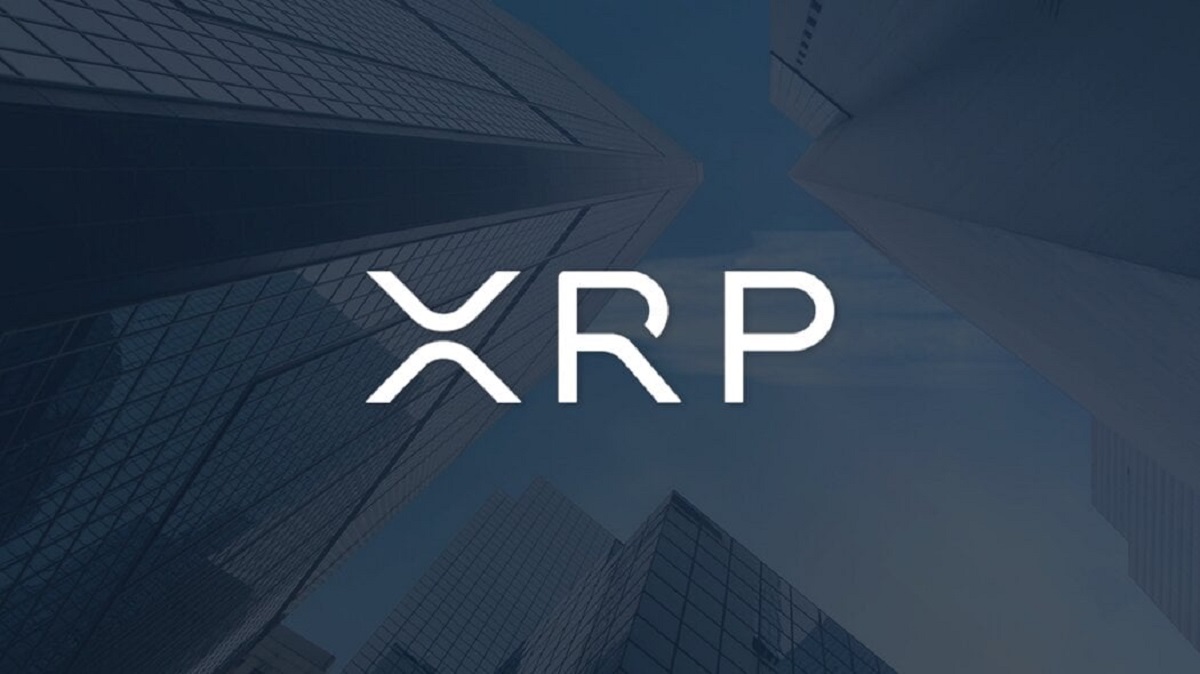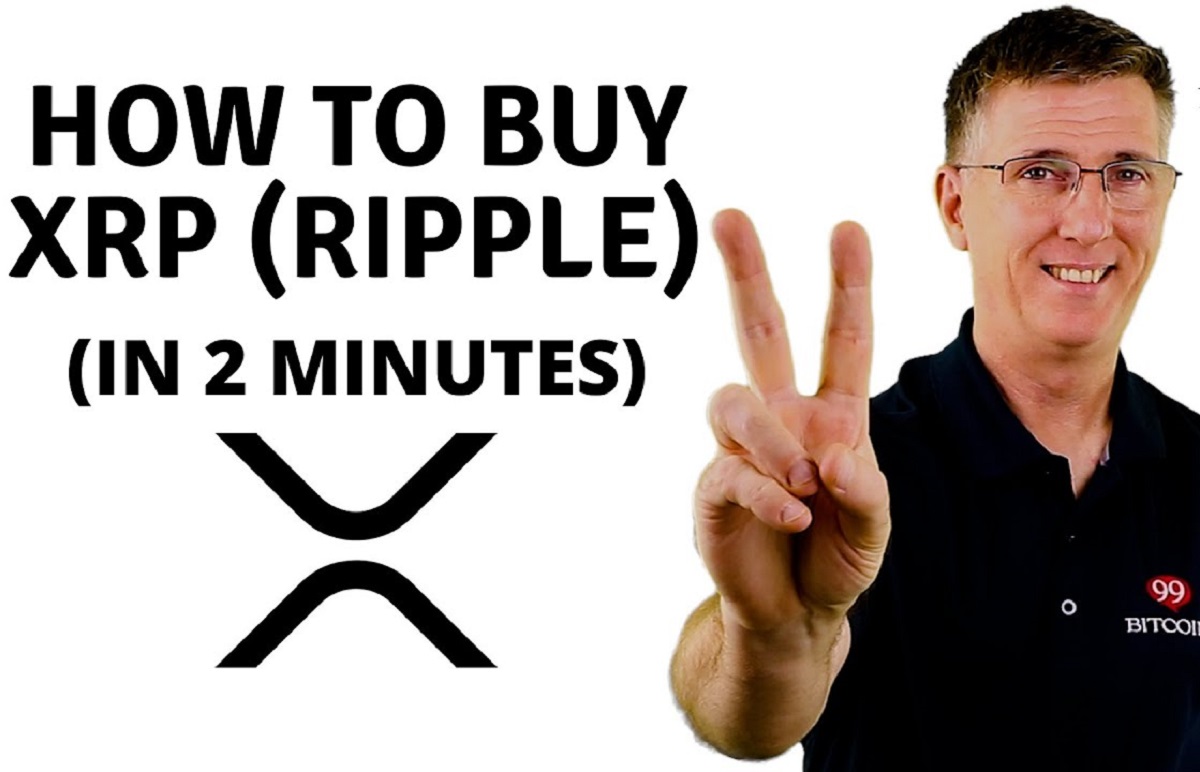Introduction
Since its inception, XRP has been one of the most buzz-worthy cryptocurrencies in the market. As part of the Ripple network, XRP aims to facilitate fast and secure cross-border transactions, making it a popular choice for banks and financial institutions. With its unique features and potential for widespread adoption, many investors and crypto enthusiasts are curious about the future value of XRP.
However, predicting the exact price of any cryptocurrency, including XRP, is an incredibly challenging task. The volatile nature of the crypto market, coupled with various external factors, makes it virtually impossible to provide a definitive answer. Nonetheless, by analyzing the current state of XRP, evaluating its use cases, considering its adoption and partnerships, and accounting for regulatory factors, we can gain some insights into its potential value in 2025.
It’s important to note that any price predictions or analysis are purely speculative and should not be considered as financial advice. The cryptocurrency market is highly volatile, and investing in digital assets carries significant risks.
In this article, we will explore the factors that affect XRP’s value, discuss the current state of XRP, analyze its potential growth and adoption, compare it to other cryptocurrencies, and highlight both the potential upsides and downsides of investing in XRP. By gaining a comprehensive understanding of these aspects, you will be better equipped to make informed decisions regarding XRP investments.
So, let’s delve into the fascinating world of XRP and explore what the future might hold for this remarkable cryptocurrency.
Factors Affecting XRP’s Value
There are several key factors that play a significant role in determining the value of XRP. Understanding these factors can provide valuable insights into the potential growth and stability of the cryptocurrency.
1. Market Demand: The demand for XRP plays a crucial role in its value. Increased interest from institutional investors, banks, and financial institutions can drive up the demand for XRP, causing its price to rise. Likewise, a lack of demand can lead to a decrease in value.
2. Network Usage: The utilization of the Ripple network and the number of transactions processed using XRP also impact its value. If the network witnesses increased adoption and usage, it can lead to a rise in demand, thereby positively influencing the value of XRP.
3. Ripple’s Business Success: As XRP is closely tied to the success of Ripple, the performance of Ripple as a company can affect its value. Positive developments, such as strategic partnerships and expansions into new markets, can instill confidence in investors and potentially drive up the value of XRP.
4. Regulatory Environment: The regulatory landscape surrounding cryptocurrencies can have a significant impact on their value. Favorable regulations and clear guidelines can foster trust and encourage institutional investors to enter the market, potentially driving up the value of XRP. Conversely, negative regulatory developments can lead to a decrease in demand and value.
5. Market Sentiment: The overall sentiment and perception of cryptocurrencies, including XRP, among investors and the general public can influence its value. Positive news, such as partnerships or technological advancements, can foster bullish sentiment, while negative news, such as security breaches or regulatory concerns, can lead to a bearish sentiment and impact the value of XRP.
6. Competition: The presence of other cryptocurrencies that offer similar functionality to XRP can affect its value. If competing cryptocurrencies gain significant traction and offer more attractive features or benefits, it may lead to a decrease in demand and value for XRP.
Understanding these factors and staying informed about their developments can help investors make more informed decisions regarding XRP investments. However, it’s important to note that the cryptocurrency market is notoriously volatile, and prices can be influenced by a myriad of unpredictable factors.
Let’s now delve into the current state of XRP and evaluate how these factors may impact its future value.
Current State of XRP
XRP has established itself as one of the leading cryptocurrencies in terms of market capitalization and usage. As of now, XRP holds a substantial market cap, ranking among the top cryptocurrencies, which reflects its popularity and widespread adoption.
One of the key factors that sets XRP apart from other cryptocurrencies is its association with Ripple, a blockchain-based payment protocol designed to facilitate fast and efficient cross-border transactions. Ripple’s network boasts partnerships with numerous major financial institutions globally, providing XRP with a solid foundation for potential growth and value.
Another notable aspect of XRP is its scalability. XRP is able to handle a high volume of transactions, processing them quickly and at a low cost, making it an attractive option for banks and other financial institutions seeking to improve and streamline their cross-border payment processes.
Additionally, XRP has demonstrated resilience and market stability over the years. Despite the inherent volatility of the cryptocurrency market, XRP has maintained its position and continued to be a significant player in the industry.
However, it is crucial to acknowledge the potential challenges faced by XRP. One of the main concerns surrounding XRP is its ownership distribution. A significant portion of XRP tokens is held by Ripple, which has raised questions regarding the decentralized nature of the cryptocurrency.
Furthermore, the ongoing debate about XRP’s classification as a security by regulatory authorities has created uncertainty and impacted market sentiment. The outcome of this regulatory scrutiny could have implications for XRP’s future and its value in the long run.
Despite these challenges, XRP has shown resilience and continued to generate interest and partnerships in the financial industry. Its use cases and potential for facilitating seamless cross-border transactions make it a promising cryptocurrency with significant growth potential.
In the next section, we will delve into various price predictions and forecasts for XRP in 2025. While it’s important to approach these predictions with caution, they can provide insights into the possible future value of XRP.
XRP Price Predictions for 2025
As with any cryptocurrency, predicting the exact price of XRP in the future is challenging and speculative. The cryptocurrency market is notorious for its volatility, and various factors can influence the value of XRP. However, several analysts and experts have provided their insights and predictions regarding the potential price of XRP in 2025.
Some analysts believe that XRP’s price will experience significant growth in the coming years. They argue that the increasing adoption of Ripple’s network, along with the demand for faster and more secure cross-border transactions, will drive up the value of XRP. Predictions vary, but some estimates suggest that XRP’s price could reach anywhere from $10 to $20 per coin by 2025.
On the other hand, there are more conservative predictions that suggest a gradual and steady increase in XRP’s price. These analysts argue that while XRP has the potential for growth, the cryptocurrency market’s volatility and regulatory challenges may hinder its value appreciation. They project a more modest price range for XRP in 2025, hovering around $3 to $5 per coin.
It’s important to note that these predictions are based on various factors, including the current state of XRP, its potential use cases, and market trends. However, they should not be taken as guaranteed outcomes. The cryptocurrency market is highly speculative, and unforeseen events or developments can significantly impact XRP’s price trajectory.
Investors and enthusiasts should consider these predictions as informative, yet not the sole basis for making investment decisions. Conducting thorough research, diversifying one’s portfolio, and staying updated on market trends and regulatory changes are fundamental to making sound investment choices.
Now, let’s explore the potential use cases for XRP and how they can contribute to its growth and adoption.
Analysis of XRP Use Cases
One of the key factors contributing to the potential value and adoption of XRP is its use cases and applications in various industries. Ripple’s XRP aims to revolutionize cross-border transactions by offering fast, low-cost, and secure transfers.
First and foremost, XRP serves as a bridge currency in the Ripple network. It facilitates the seamless transfer of value between different fiat currencies, enabling faster and more efficient cross-border transactions. By utilizing XRP, financial institutions can bypass the need for multiple currency conversions and intermediary banks, reducing costs and processing times.
Another potential use case for XRP lies in remittances. Sending money across borders can be costly and time-consuming, especially in regions with limited banking infrastructure. XRP’s fast transaction speeds and low fees make it an attractive option for remittance providers, allowing them to offer cheaper and quicker services to their customers.
Furthermore, XRP can serve as a liquidity solution for financial institutions. By holding XRP, banks can tap into the liquidity of other currencies without the need for pre-funded nostro accounts. This can free up capital for banks and allow them to operate more efficiently.
Beyond the financial industry, XRP can also find applications in other sectors. For example, XRP can be utilized in supply chain management to track and verify product authenticity and ownership. Additionally, XRP’s fast transaction speeds make it suitable for micropayments and the emerging Internet of Things (IoT) ecosystem.
Despite these potential use cases, it’s important to acknowledge that widespread adoption of XRP in these industries is still in its early stages. While Ripple has secured partnerships with numerous financial institutions, further adoption and integration into existing systems will be key to realizing the full potential of XRP’s use cases.
Understanding and analyzing these use cases can help investors and enthusiasts assess the long-term demand and growth potential of XRP. Additionally, as more industries recognize the benefits of utilizing XRP, it can contribute to increased demand and ultimately impact the value of the cryptocurrency.
In the next section, we will explore XRP’s adoption and partnerships, which play a crucial role in its future success and price appreciation.
XRP Adoption and Partnerships
XRP’s potential for widespread adoption is closely tied to its partnerships and collaborations with various financial institutions and organizations. Ripple, the company behind XRP, has been successful in forging partnerships that aim to leverage the advantages of blockchain technology and improve cross-border payments.
One of the notable partnerships Ripple has established is with global payment networks and banks. Ripple’s network, powered by XRP, offers a secure and efficient way for these institutions to conduct cross-border transactions. Some prominent partners include Santander, American Express, and Standard Chartered, among others. These collaborations demonstrate a growing recognition of the benefits of XRP and Ripple’s technology in the financial industry.
Besides traditional financial institutions, Ripple has also expanded its reach into emerging markets. By partnering with mobile payment providers and remittance companies, Ripple aims to facilitate faster and cheaper cross-border transfers for individuals in regions with limited access to banking services. These partnerships can significantly contribute to the adoption and usage of XRP in these underserved markets.
Moreover, Ripple’s investment arm, Xpring, has been actively investing in startups and projects that utilize XRP and Ripple’s technology. By supporting innovative ventures and providing funding, Ripple aims to foster the growth of the XRP ecosystem and drive further adoption of the cryptocurrency.
However, it’s crucial to note that partnerships and adoption take time to fully materialize. The integration of XRP and Ripple’s solutions into existing financial systems and processes requires careful planning and regulatory considerations. While the progress has been promising, it’s essential to monitor the execution and outcomes of these partnerships to evaluate their impact on XRP’s adoption and value.
Additionally, regulatory considerations and compliance play a significant role in the adoption of XRP. Ripple has been actively working with governments and regulatory bodies to ensure that its operations align with the necessary legal frameworks. Clarification and favorable regulations pertaining to cryptocurrencies can provide a conducive environment for further adoption and usage of XRP.
Overall, XRP’s partnerships with financial institutions, mobile payment providers, and remittance companies, along with Ripple’s investments in the XRP ecosystem, lay the foundation for potential widespread adoption. As more organizations recognize the benefits of utilizing XRP for cross-border transactions, it can lead to increased demand and positively impact the value of the cryptocurrency.
In the next section, we will explore the regulatory considerations that can influence the future value of XRP.
Regulatory Considerations
When it comes to cryptocurrencies like XRP, regulatory considerations play a crucial role in shaping their future value and adoption. The regulatory landscape surrounding digital assets continues to evolve, and understanding the potential impact of regulations is essential for investors and users of XRP.
One of the primary challenges for XRP and other cryptocurrencies is their classification by regulatory authorities. The question of whether XRP should be considered a security or a currency has been a topic of debate. The classification as a security could subject XRP to additional regulatory requirements, potentially impacting its usage and liquidity. Clarity on this matter is crucial as regulatory certainty can foster trust and confidence among institutional investors and pave the way for broader adoption of XRP.
Furthermore, regulations surrounding Anti-Money Laundering (AML) and Know Your Customer (KYC) compliance are significant factors for the cryptocurrency industry. Ensuring proper AML and KYC procedures helps prevent illicit activities, such as money laundering and terrorist financing, and promotes a more transparent and secure ecosystem. Compliance with these regulations is essential for XRP’s adoption in traditional financial institutions, as they operate within strict regulatory frameworks.
Another aspect to consider is the impact of regulatory authorities on the trading and liquidity of XRP. Regulatory actions, such as imposing restrictions or limitations on exchanges or imposing taxes on cryptocurrency transactions, can influence the trading volume and accessibility of XRP. Any unfavorable regulatory developments can potentially lead to a decrease in demand and value for XRP.
On the other hand, favorable regulatory frameworks can provide a supportive environment for the adoption and use of XRP. Clarity on tax regulations, licensing requirements, and investor protection measures can attract institutional investors and foster innovation in the industry. Regulatory certainty can also help build trust among users and encourage the development of compliant and secure platforms that facilitate the trading and storage of XRP.
It is important to note that regulations vary across different jurisdictions, and the regulatory landscape is still evolving. As governments and regulatory bodies continue to study and adapt to the cryptocurrency space, more clarity and standardized regulations may emerge, which can positively impact XRP’s value and adoption.
Keeping track of regulatory developments and compliance requirements is crucial for investors and users of XRP. Understanding the impact of regulations on XRP’s usability, liquidity, and overall market sentiment can help ensure informed decision making and mitigate potential risks.
In the next section, we will compare XRP’s position and potential against other prominent cryptocurrencies in the market.
Comparison with Other Cryptocurrencies
When evaluating the potential value of XRP, it is important to consider its position and characteristics in comparison to other prominent cryptocurrencies in the market. While each cryptocurrency has its unique features and use cases, understanding how XRP stacks up against its competitors can provide valuable insights.
Bitcoin (BTC), the first and most well-known cryptocurrency, serves as a store of value and a medium of exchange. It has a limited supply and is often seen as digital gold. In contrast, XRP is designed specifically for cross-border payments and focuses on transaction speed and scalability. The primary difference lies in their use cases, with Bitcoin being more commonly used as a speculative asset and store of value, while XRP targets more practical applications in the financial industry.
Ethereum (ETH) is another significant cryptocurrency that goes beyond payments. It enables the development of decentralized applications (DApps) and smart contracts through its blockchain platform. This sets it apart from XRP, which has a narrower focus on cross-border transactions. Ethereum’s broader functionality gives it a different value proposition, appealing to developers and businesses looking to build decentralized applications.
Ripple, the company behind XRP, distinguishes itself by its partnerships with financial institutions and its focus on revolutionizing cross-border transactions. This sets XRP apart from cryptocurrencies like Stellar (XLM), which shares a similar goal but targets different industries and demographics. Both XRP and XLM aim to transform international remittances, but XRP focuses more on working with established financial institutions, while Stellar puts emphasis on serving the unbanked and facilitating low-cost microtransactions.
When comparing XRP’s market cap against other cryptocurrencies, it consistently ranks among the top cryptocurrencies, indicating its popularity and widespread adoption. However, it is important to note that market rankings and capitalization can change over time as the cryptocurrency market evolves.
Overall, while each cryptocurrency has its unique strengths and use cases, XRP’s focus on cross-border transactions and its partnerships with financial institutions position it as a potential game-changer in the global payments industry. Its scalability, speed, and low transaction costs give it a competitive edge in facilitating fast and secure cross-border transfers.
Considering the specific use cases, partnerships, and market positioning of XRP in relation to other cryptocurrencies can provide valuable insights for investors and enthusiasts alike, helping them assess its potential value and market standing.
In the next section, we will examine the potential upsides and downsides of investing in XRP.
XRP’s Potential Upsides and Downsides
As with any investment, it is crucial to consider the potential upsides and downsides of investing in XRP. While XRP offers unique features and promising partnerships, it also faces certain challenges and risks that investors should be aware of.
One of the main advantages of XRP lies in its potential for widespread adoption. Ripple’s partnerships with financial institutions and its focus on improving cross-border transactions position XRP as a potential solution for global payment challenges. Increased adoption and usage can drive up the demand for XRP, potentially leading to an appreciation in its value.
Furthermore, XRP’s scalability and low transaction costs provide it with a competitive edge in the realm of cross-border transactions. This can attract more financial institutions, remittance companies, and other entities to utilize XRP, contributing to its growth and potential value appreciation.
Additionally, regulatory clarity and recognition can positively impact XRP. As governments and regulatory bodies establish appropriate frameworks for cryptocurrencies, XRP’s compliance with such regulations can foster trust and confidence among institutional investors, potentially leading to further adoption.
However, investing in XRP comes with its downsides and risks. The volatile nature of the cryptocurrency market can result in significant price fluctuations, which may lead to potential losses for investors. It is essential to be prepared for this volatility and invest only what can be afforded to lose.
One of the key challenges facing XRP is the ownership distribution. A significant portion of XRP tokens is held by Ripple, which raises questions about the decentralization of the cryptocurrency. This concentration of ownership can introduce certain risks and potential conflicts of interest.
Furthermore, the regulatory environment surrounding cryptocurrencies remains uncertain and can impact the adoption of XRP. The classification of XRP as a security or currency, along with potential regulatory restrictions and compliance requirements, can influence its accessibility and liquidity.
Lastly, despite its growing partnerships, XRP faces competition from other cryptocurrencies that target similar use cases, such as cross-border payments. The success and adoption of competing cryptocurrencies can impact the demand and value of XRP.
Investors should carefully evaluate these potential upsides and downsides, conduct thorough research, and consider their risk tolerance before making any investment decisions. It is essential to stay informed about market trends, regulatory developments, and the progress of partnerships to assess the potential future value of XRP.
Now, let’s wrap up our analysis and summarize the insights gained from this examination of XRP.
Conclusion
Throughout this analysis, we have explored various aspects related to the potential value and future of XRP. While it is challenging to make precise predictions, we can draw some conclusions based on the information presented.
XRP, as part of the Ripple network, has established itself as a leading cryptocurrency, aiming to revolutionize cross-border transactions. Its fast transaction speeds, low costs, and scalability make it an attractive solution for financial institutions seeking efficient cross-border payments.
The current state of XRP showcases its resilience and market stability, although challenges such as ownership distribution and regulatory uncertainties persist. However, XRP’s partnerships with financial institutions, mobile payment providers, and remittance companies signal growing recognition and potential widespread adoption.
Price predictions for XRP in 2025 vary, with estimates ranging from conservative to more optimistic projections. Nevertheless, investors should approach these predictions with caution, considering the highly volatile nature of the cryptocurrency market and the potential impact of unforeseen events and market dynamics.
When comparing XRP to other cryptocurrencies, it has distinctive features, including its focus on cross-border transactions and its partnerships with traditional financial institutions. This sets it apart from its competitors and positions it as a potential game-changer in the global payments industry.
However, investing in XRP comes with risks, including price volatility and regulatory considerations. It is important for investors to carefully assess these risks, conduct thorough research, and diversify their portfolios to mitigate potential losses.
In conclusion, XRP holds significant potential as a cryptocurrency focused on improving cross-border transactions. Its scalability, partnerships, and growing adoption are key factors that contribute to its future value. However, the cryptocurrency market is highly dynamic and influenced by numerous factors, making it essential for investors to stay informed and adapt their strategies accordingly.
By staying updated on market trends, regulatory developments, and the progress of partnerships, investors can make informed decisions regarding their investments in XRP. Ultimately, the success and value of XRP will depend on its ability to attract widespread adoption and deliver on its promise of revolutionizing cross-border transactions.







